Navigation
Install the app
How to install the app on iOS
Follow along with the video below to see how to install our site as a web app on your home screen.
Note: This feature may not be available in some browsers.
More options
You are using an out of date browser. It may not display this or other websites correctly.
You should upgrade or use an alternative browser.
You should upgrade or use an alternative browser.
BAD NEWS - Velvet Strain Survives 1.75 PPM Copper!
- Thread starter 4FordFamily
- Start date
- Tagged users None
- Joined
- Nov 9, 2014
- Messages
- 22,424
- Reaction score
- 34,850
You will not find scientific studies on the use of copper power.
Both Copper Power and Coppersafe were used in parts of this study: https://www.sciencedirect.com/science/article/abs/pii/0044848681900697
And for those who prefer Cupramine: http://www.scielo.br/scielo.php?scr...-29612019005008110&lng=en&nrm=iso&tlng=en#t01
Brew12
Electrical Gru
View BadgesExcellence Award
Reef Tank 365
Article Contributor
Moderator Emeritus
North Alabama Reef Club
Article Administrator
My Tank Thread
I stand corrected, but I will still question their application in the study against how we use them.Both Copper Power and Coppersafe were used in parts of this study: https://www.sciencedirect.com/science/article/abs/pii/0044848681900697
And for those who prefer Cupramine: http://www.scielo.br/scielo.php?scr...-29612019005008110&lng=en&nrm=iso&tlng=en#t01
I don't have access to the first one, it isn't part of the library I subscribe to. Do the treatment methods used in it line up with currently recommended practices?
The 2nd study is not what is typically recommended. Part of the procedure tested was to syphon the bottom of the tank two times per day. I would also point out that skin scrapes after 7 days of treatment were negative but they sold the fish immediately after the 15 day treatment was complete.
Claims made without evidence should be dismissed out of hand
Extraordinary claims require extraordinary evidence
This is true. We need extraordinary evidence. But how do we get that? I can say, and do quite often, that my fish are totally immune from apparently everything, including velvet and have been for 40 years but how do I prove that?
I do post pictures of some of my fish from 20 years ago and still have some of those fish today even though I have never quarantined or treated anything. The only way I can prove that is for half the people on here to come and live with me for a few years but my wife may have a problem with that.
I have been posting pictures of fish I buy covered in parasites that I throw in my reef and it is still disease free.
I have asked for years for anyone to come to my home with a sick fish and put it in my tank.
I will invite anyone over to see my system and many people have. I have been writing articles about this in paper magazines for decades, or on line and I wrote a book where all the pictures of fish in that book are still living. But that is not extraordinary enough.
I have never posted on a disease about my fish on this forum or any other and I am on many.
It seems to me that I can't prove anything about my fish. But I see that the people who keep asking for proof that I can't supply are having disease issues with their fish so they can prove that whatever method they are using is certainly "not" working. ;Wideyed
This picture of my tank during a particularly bad algae outbreak was taken maybe 20 or 25 years ago. That fireclown in the center is still with me.

He is not only with me, but he is still spawning with his 18 year old partner.

But I wouldn't call that proof of anything because clownfish are very hard to kill, even with velvet.
I can try something a little more susceptible to disease like this watchman gobi that I bought as a baby.
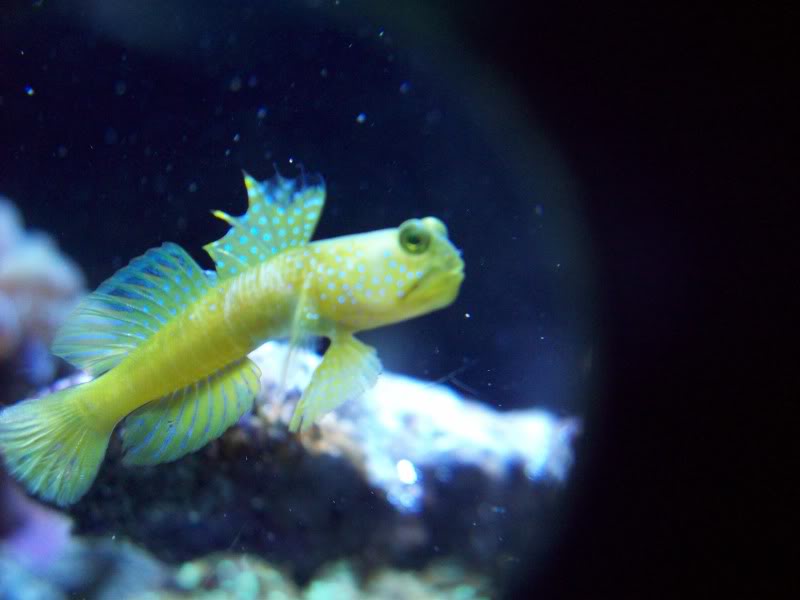
They are here as adolescents.
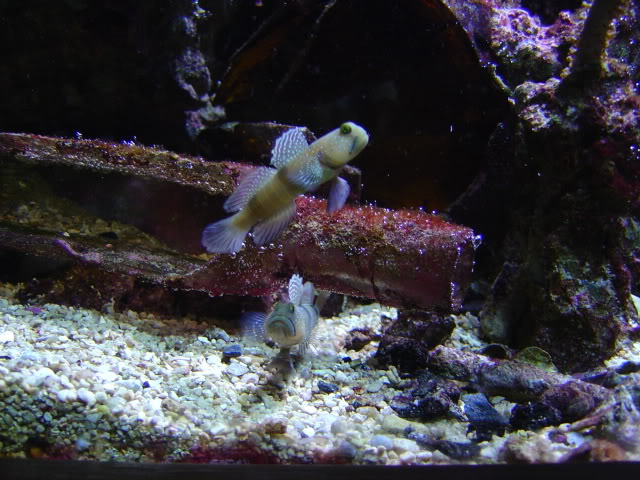
Here she is with her eggs
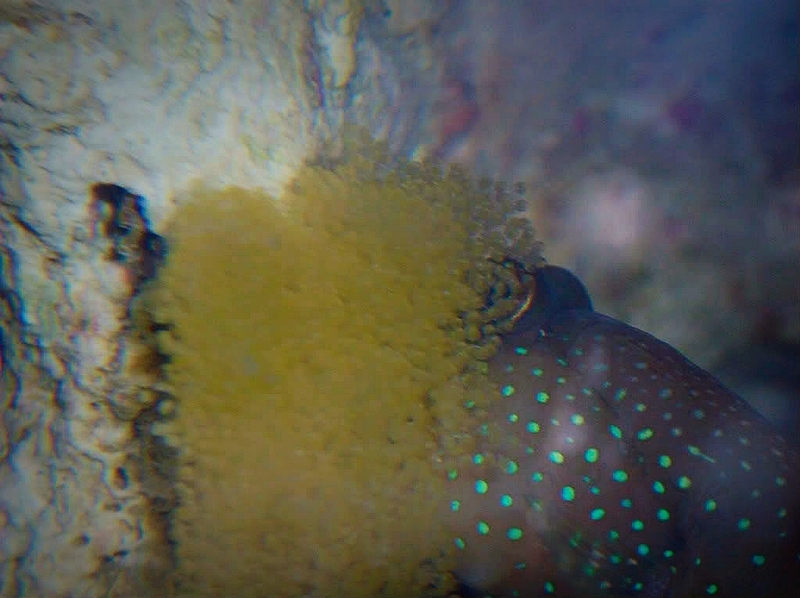
Here they are late in their life about 12 years old. Just like old, fat, lazy married people.
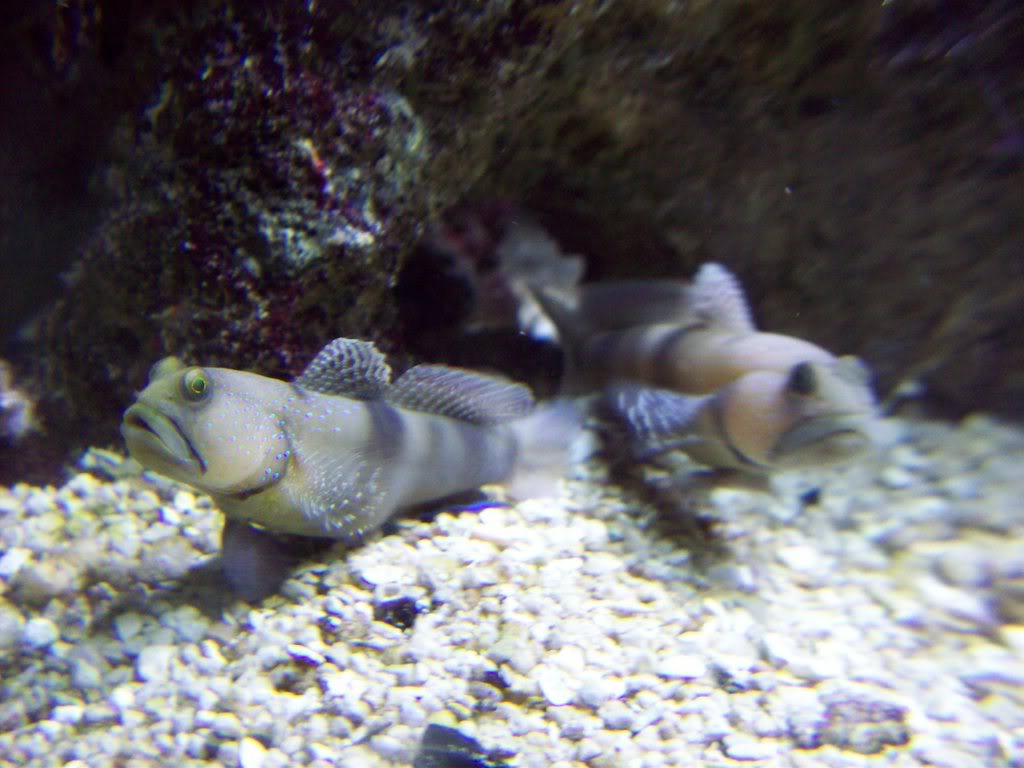
After a long life of 12 years I remove them before they die of old age so they can pass away in peace without the bristleworms eating them.
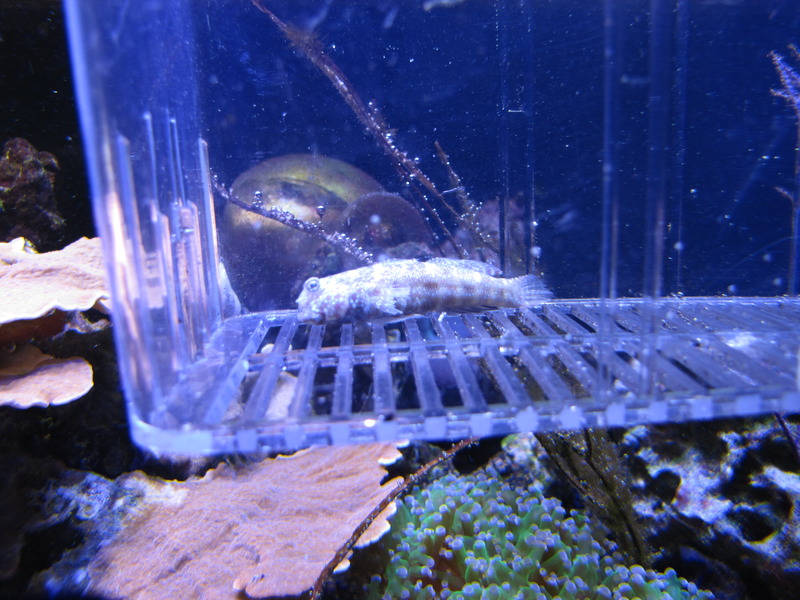
But that is also not proof because watchman gobies are also pretty hardy.
A couple of months ago I got this little Hippo tang which I posted. After a few minutes of acclimation I threw him in. He is still there, no spots and perfect blue color with not a spot or scale out of place.
I am old so I probably will not live as long as he will so I will just have to die knowing that I just can't provide irrefutable proof even if a burning bush appeared in front of my tank and Moses came over to say it.
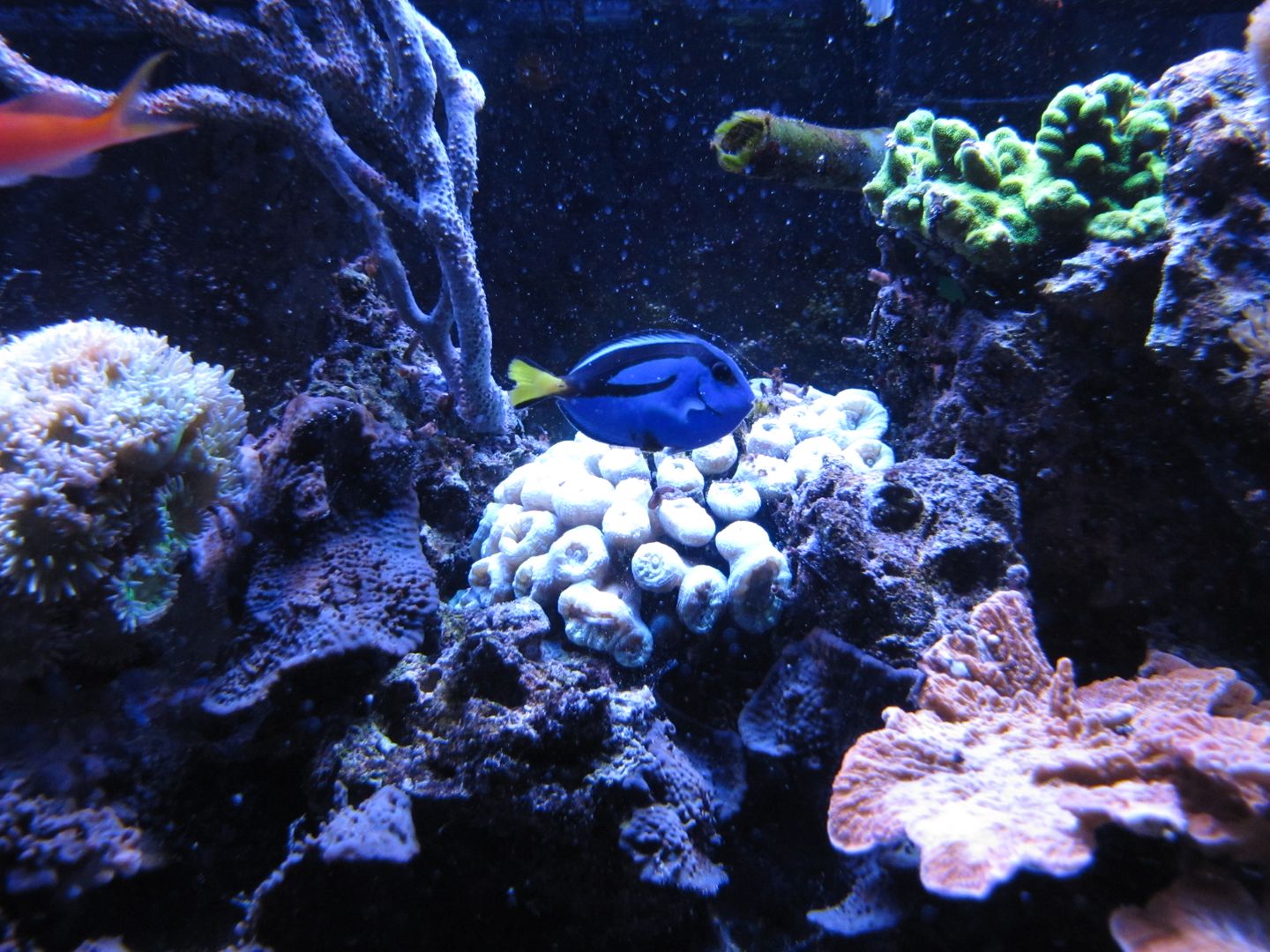
Spawing mandarins.
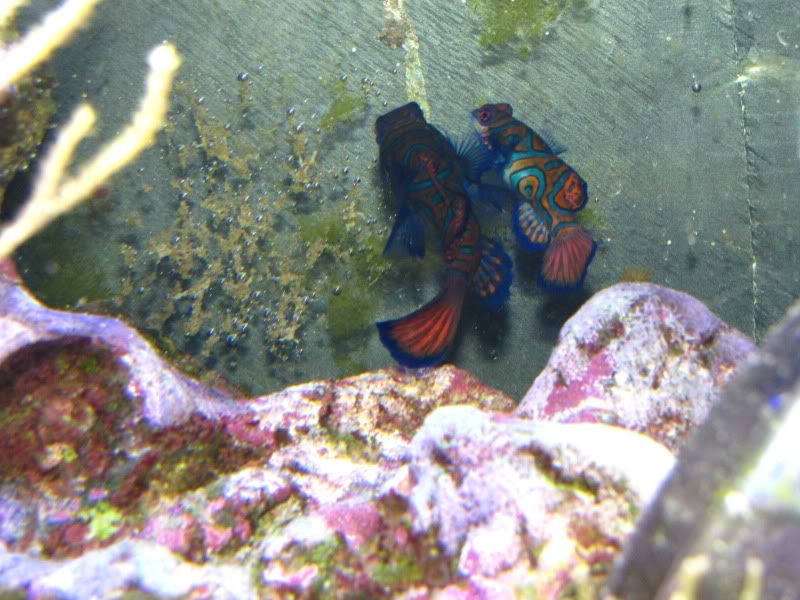
Clown gobies guarding their many batches of eggs.

Spawning bluestripes.
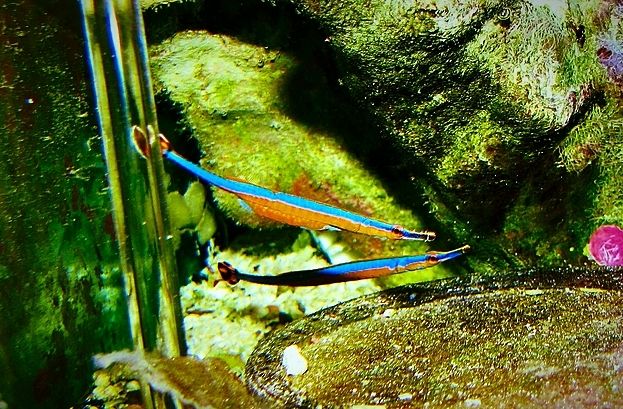
Now I know I can't prove that my system works by not only keeping fish disease free, allows them to spawn and only die of old age and lets me walk on water. But I would like to see similar pictures of tanks using that "other" system.
Lets see some spawning 28 year old, quarantined, never sick fish. Lets see some pictures of fish as babies, teenagers and dying of old age.
Lets see "any" old tanks that have never had any diseases in decades and are still running and healthy using any other system. Of course that still wouldn't satisfy some people so we would have to go back to that burning bush.
Last edited:
On this subject, I have 300 gal with fish, crabs and shrimp with fake corals. 8 weeks ago I lost all of the fish except 1 damsel within 2 days due to Velvet. I have not been able to catch the one blue damsel who appears to be healthy but won't go into the trap. Because of the crabs, starfish and shrimp I can't treat with copper. I have set up a quarantine tank and would like to start buying fish. What are the chances that one small fish could not be found for the Velvet lifecycle to continue and the tank has been eradicated? Quarantine time on a few new fish will take another 4 weeks so that would be a total of 12. Any experience would be appreciated.
- Joined
- May 2, 2018
- Messages
- 88
- Reaction score
- 35
On this subject, I have 300 gal with fish, crabs and shrimp with fake corals. 8 weeks ago I lost all of the fish except 1 damsel within 2 days due to Velvet. I have not been able to catch the one blue damsel who appears to be healthy but won't go into the trap. Because of the crabs, starfish and shrimp I can't treat with copper. I have set up a quarantine tank and would like to start buying fish. What are the chances that one small fish could not be found for the Velvet lifecycle to continue and the tank has been eradicated? Quarantine time on a few new fish will take another 4 weeks so that would be a total of 12. Any experience would be appreciated.
Lower water volume in your tank and then try catching the damsel. If this also doesn't work you will have to remove the rocks since with damsel in the tank you can never be sure whether your fallow period has been successful or not.
All fish MUST be removed or you will still have velvet in your tank. The damsel may not show signs of the disease but will be a carrier and reinfect new fish added if not treated in
QT tank.
QT tank.
Thank you for this. Based on the article I should be closer to 2.0ppm copper. Will adjust dose tonight and test again. I had always though between 1.5 and 2.0 was ok (didn't need the highest 2.0 reading). Still wondering if anyone else has had Velvet return to their tanks with zero additions or changes.Breaking News: We believe we have discovered at least one strain of velvet that survives 1.75 PPM copper, we recommend increasing to 2.0PPM to eradicate it.
@HotRocks and I have quarantined hundreds of fish over the past year and we've unfortunately learned a lot of hard lessons we can pass to all of you. The previously "accepted" and studied therapeutic level of copper for eradicating ich + velvet was 1.5 PPM. We suggested 1.75 PPM to account for human error and a cushion.
On TWO separate occasions, we've had velvet make it through copper. The first time, some QT's had CP (Chloroquine Phosphate) and the others Copper. When these were combined to a 125 G observation tank post-treatment, velvet can roaring in within 3-4 days very badly.
The first time we blamed CP (we found that the bags used in the filter media contained poly, so it was likely that the CP levels were reduced by the poly pad found in the HOB filters -- we had cut out and removed all carbon). This was still an important thing to know/learn (as common sense as it sounds).
This time we used ONLY copper, and combined only one large batch of fish from copper in to another sterile tank, and the same thing happened. So it may have been this strain surviving copper the first time as well. But for certain, from this last batch, it can survive copper levels around 1.75PPM.
Methodology: completely sterile tanks, bleached in-between use, zero cross-contamination, 10 feet or more away from one another, copper levels measured with the Hanna Copper Checker. 14 days in 1.75PPM, then transfer to another sterile quarantine. 14 days should be MORE than enough for the life cycle of velvet, which is pretty short.
Anyone with failed quarantine to velvet that did not add anything wet to the tank, cross-contaminate, or is as anal about ensuring everything is done by the book as @HotRocks is, this is the likely reason for the failure.
I've updated the "my quarantine process" thread first post, changing to 2.0 PPM copper, as well as the Hanna Checker thread. We will slowly be changing all suggestions to 2.0 PPM.
We are of course discussing chelated copper products such as Copper Power (our primary recommendation due to it being far more consistent and reliable than CopperSafe). Ionic copper such as Cupramine and Cuprion have a therapeutic range of .5 - .6 -- previously .45 - .55 but we are comfortable increasing it in light of this new discovery.
What Has Caused This?
Well, if it is true and not human error or some misunderstanding about velvet, I suspect that LFS and the distribution system maintaining sub-therapeutic copper levels is probably the most likely reason. Like any organism, velvet adapts. The more we subject fish to sub-therapeutic levels of medication, the more likely these organisms are to “evolve” or adapt. I understand why LFS and distributors do this; it keeps fish alive and keeps fish prices low. Unfortunately, there are lasting impacts.
What Do We Do?
1) Treat your fish with therapeutic copper (those that can handle it, which is the vast majority) or CP. In reality, fish are kept in copper before they arrive, acclimating them to a QT with copper right from the beginning isn't going to be as hard on them as you'd think since they've been in copper for some time since collection, theoretically. We've done it hundreds of times with good success. Chloroquine Phosphate can be used on fish such as sharks, rays, some puffers, etc. that do not typically handle copper well.
2) Use accurate copper testing methods like the Hanna Checker. Each failed treatment where velvet or ich failed to be eradicated gives the parasite more resilience to the "medication". Color kits are near impossible to be accurate with, and with such a risk of reinfection you need to be certain of the level of copper in the tank.
Avoid copper in the DT for the same reason unless absolutely the only option. This because it is much harder to maintain constant therapeutic copper levels due to absorption with substrate and rocks in anything but a sterile hospital/quarantine tank.
Footnote: This has NOT been proved scientifically, only anecdotally. We didn't perform scrapes and confirm anything in a lab. It happens so quick we have to act quick to save fish, and it's too late for many by the time we discover it. It is possible that another course of action would fix the issue such as extending the length of copper another week. Someone else will have to fund/perform any scientific research. It was without a doubt, not ich or brook. Disregard at your own risk.
#reefsquad
4FordFamily
Tang, Angel, and Wrasse Nerd!
View BadgesStaff member
Super Moderator
Partner Member 2024
Excellence Award
Reef Tank 365
Expert Contributor
Article Contributor
Hospitality Award
INDMAS Member
My Tank Thread
I’ve had two other people PM me that they think it got through under 2.0, and another unconfirmed around 2.25ppm but not sure yet it may be brook (from another member here).Thank you for this. Based on the article I should be closer to 2.0ppm copper. Will adjust dose tonight and test again. I had always though between 1.5 and 2.0 was ok (didn't need the highest 2.0 reading). Still wondering if anyone else has had Velvet return to their tanks with zero additions or changes.
Please help!
I have 7 fish in QT currently for 28 days now for velvet with copper power at 2.0. Checking on QT tonight Im seeing reoccurrence of white spots on two tangs. Other 5 goby, blenny and wrasse have no signs. Re-checked cooper and it’s 1.96 as I readjust. Has anyone ever see ICH/Velvet reappear while/during copper treatment towards the end treatment close to 30 days???


I have 7 fish in QT currently for 28 days now for velvet with copper power at 2.0. Checking on QT tonight Im seeing reoccurrence of white spots on two tangs. Other 5 goby, blenny and wrasse have no signs. Re-checked cooper and it’s 1.96 as I readjust. Has anyone ever see ICH/Velvet reappear while/during copper treatment towards the end treatment close to 30 days???
Last edited:
Similar threads
- Replies
- 11
- Views
- 361
- Replies
- 23
- Views
- 347
- Replies
- 5
- Views
- 85
- Replies
- 5
- Views
- 205

















